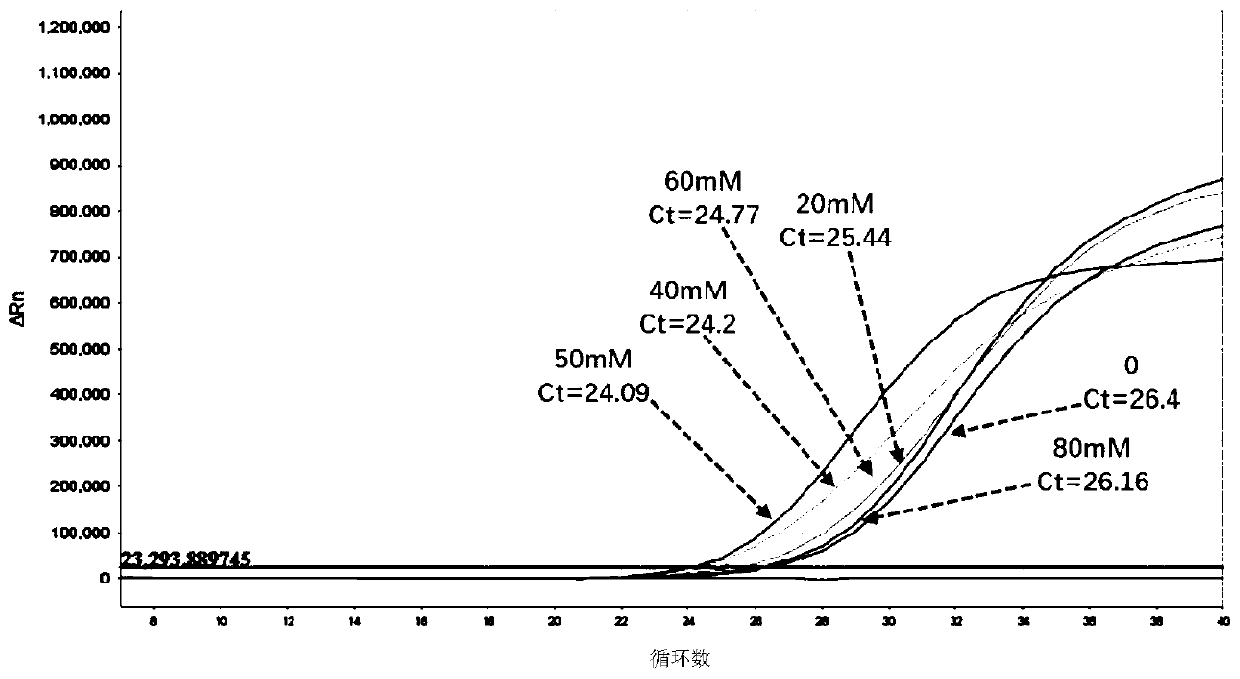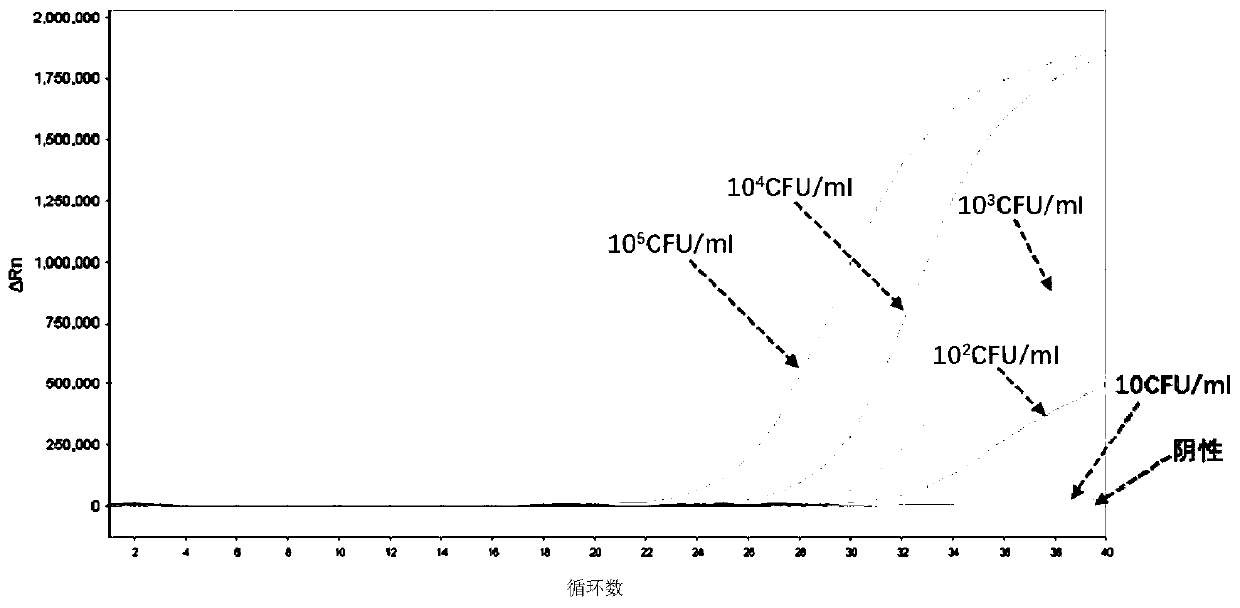Universal microbial pathogen lysate and application thereof
A lysate and pathogen technology, applied in the field of general-purpose microbial pathogen lysate, can solve problems such as unsuitable for diverse microbial pathogen sample types, single sample type, etc.
- Summary
- Abstract
- Description
- Claims
- Application Information
AI Technical Summary
Problems solved by technology
Method used
Image
Examples
Embodiment 1
[0154] Taking the cultured bacterial liquid sample of Staphylococcus aureus as an example, the effects of different proportions of the components of the lysate of the present invention on the nucleic acid extraction effect were tested.
[0155] (1) According to the formula in Table 1, respectively prepare lysate A, lysate B, and lysate C. The lysate solvent is water, and the percentage is calculated by the total volume of the lysate. Wherein Tris-HCl is adding a certain amount of 1M tris-HCl (pH=10.0) mother liquor (normal temperature, 18-25 ℃), so that the concentration of Tris (tris (tris(hydroxymethylaminomethane)) in the lysate after constant volume is the corresponding concentration .
[0156] Table 1 Lysate formula
[0157] Kind of reagent Lysate A Recipe Lysate B Recipe Lysate C Recipe Tris-HCl (pH10.0) 30mM 50mM 60mM TritonX-100 3%(v / v) 5%(v / v) 6%(v / v) Guanidine isothiocyanate 300mM 500mM 600mM KCl 20mM 50mM ...
Embodiment 2
[0162] Selection of the optimal concentration of KCl in the formulation of the Universal Rapid Lysate for Microbial Pathogens:
[0163] (1) Prepare lysates with different KCl concentrations of 0, 20mM, 40mM, 50mM, 60mM, 80mM, and other components and concentrations are the same as the lysate B in Example 1;
[0164] (2) Take 50 μl of Staphylococcus aureus bacteria solution and put it in a centrifuge tube, and add 50 μl of the above lysate with different KCl concentrations (0, 20 mM, 40 mM, 50 mM, 60 mM, 80 mM) respectively, and mix with a pipette. , and then the mixture was incubated at room temperature for 5 minutes, then centrifuged at 3000 rpm for 2 minutes, and the supernatant was collected to obtain a nucleic acid sample.
[0165] (3) Take 5 μl of nucleic acid samples for fluorescence PCR amplification. Use the upstream primer SA-F sequence is 5'-TCATTATTCGACTAGATGTTG-3' (SEQ ID No.: 1), the downstream primer SA-R sequence is 5'-CTCTTTTACTTTAGCAACCGTTG-3' (SEQ ID No.: 2)...
Embodiment 3
[0168] Preparation and use method of universal rapid lysis kit for microbial pathogens (suitable for bacterial fluid / serum / plasma / urine detection):
[0169] (1) Preparation of microbial pathogen universal rapid lysis kit (50 tests / box): 1 bottle of microbial pathogen universal rapid lysis solution (the formula is as in Example 1 lysis solution B, 2.5 mL / bottle).
[0170] (2) Specimen collection: directly use clinically collected patient serum / plasma / urine, or take cultured bacterial fluid.
[0171] (3) Detection step: Mix 50 μL of the sample and lysate, mix with a pipette, then incubate the mixture at room temperature for 5 minutes, then centrifuge at 3000 rpm for 2 minutes, and collect the supernatant, which is nucleic acid extraction thing.
[0172] The nucleic acid extract can be directly used for PCR amplification or fluorescent PCR detection, and can also be stored at -20°C for a long time.
PUM
| Property | Measurement | Unit |
|---|---|---|
| Sensitivity | aaaaa | aaaaa |
Abstract
Description
Claims
Application Information
 Login to View More
Login to View More - R&D
- Intellectual Property
- Life Sciences
- Materials
- Tech Scout
- Unparalleled Data Quality
- Higher Quality Content
- 60% Fewer Hallucinations
Browse by: Latest US Patents, China's latest patents, Technical Efficacy Thesaurus, Application Domain, Technology Topic, Popular Technical Reports.
© 2025 PatSnap. All rights reserved.Legal|Privacy policy|Modern Slavery Act Transparency Statement|Sitemap|About US| Contact US: help@patsnap.com



